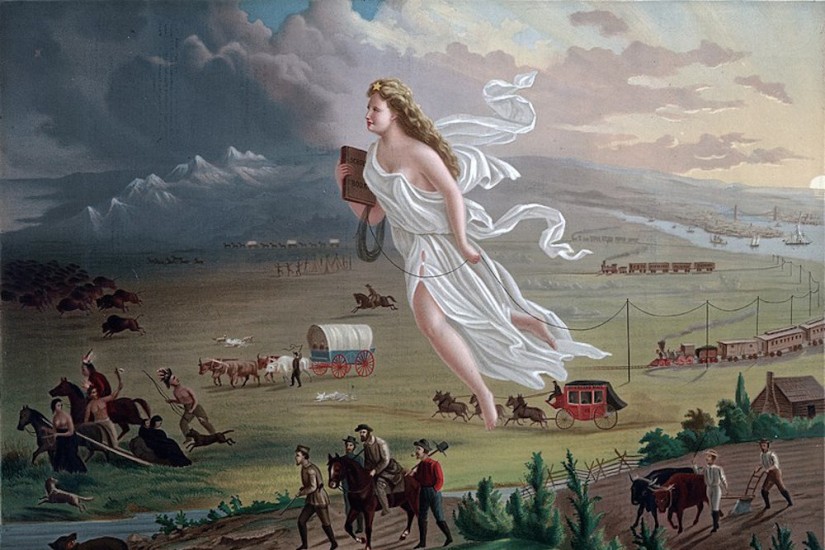The language of nationalism, when it surfaced in the United States in the 1830s, had less to do with feelings of national belonging than with the ongoing dispute between federal power and states’ rights. To be a nationalist meant to advocate for the power of the federal government. After the Federalist Party died, the National Republican Party, founded in 1824, briefly replaced it. Its members were known as the “Nationals,” and what they advocated was nationalism. When the National Party ticket did poorly in Massachusetts in 1831, one newspaper joked that “we might infer that ‘nationalism’ is in a bad way, even in Boston.”
Against nationalists stood both sectionalists, who opposed any call for an end to slavery as a violation of states’ rights, and native peoples, who refused to recognize the jurisdictional claims of the federal government. “This spirit of sectionalism must be supplanted with that of nationalism,” cried nationalists. Down with nationalism, cried sectionalists. “Everything, Mr. President, is running into nationality,” Virginia senator John Tyler fumed on the floor of the Senate in 1833. “You cannot walk along the streets without seeing the word on every sign—national hotel, national boot-black, national black-smith, national oyster-house.” All this was by way of introduction to Tyler’s argument, advocating states’ rights: “The Government was created by the States, is amenable by the States, is preserved by the States, and may be destroyed by the States; and yet we are told that it is not a Government of the States.”
And that, of course, was the crux of the matter. But much of this bluster about nationalism and sectionalism, federal power and states’ rights, was a way to avoid talking more about the actual, brutal matters at hand: the conquest of lands held for ages by indigenous peoples and the existence of people within the United States who were denied every possible protection offered by a nation-?state or, for that matter, a state-nation, people held as property.
